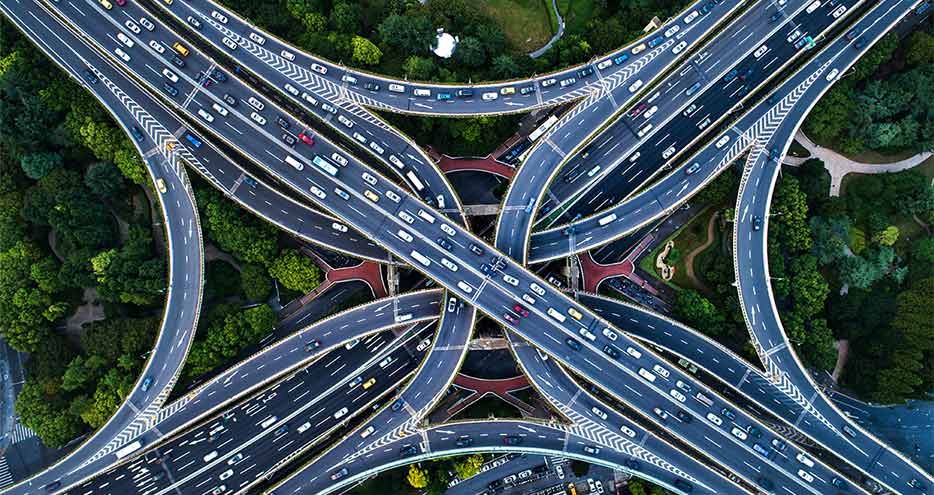
It is quite widely thought that the role of infrastructure, particularly transport, is one useful way to understand the history of places. Particularly by looking at the methods used to transport people and goods. The importance of transport is nothing new and transport improvements appear to have been the primary cause of long-run changes in the structure of places.
Debate on transport tends to focus on sustainable transport, with discussions such as negative environmental and social impacts of private car use, promotion of public transport, and consideration for a more walkable and cycle-able fabric. As for the economics of transport, greater connectivity in places can provide greater physical mobility to help achieve better socio-economic opportunities – such as access to jobs and employment.
Access to a car for private transport can often improve mobility opportunities and thus improve job prospects, this means that low car ownership groups tend to negatively and disproportionately fall on lower-income and vulnerable groups (e.g. young, elderly, and disabled). Improved public transport and walkable opportunities to access employment are important for places.
In improving transport more generally, social and economic benefits can emerge such as reduced road crashes, lower air pollution, increasing physical inactivity, reducing the time taken away from the family while commuting, and reducing any vulnerability to fuel price increases – these are particularly improved if public transport options are economically viable and successfully implemented.
Environmentally, less car use in places would obviously reduce congestion and improve health factors related to improved air quality and less smog as experienced by many international locations. It should be further noted that economic disadvantages to congestion through transport blockages (such as private car use) are those such as wasting people’s time and by slowing the delivery of goods and services.
Connectivity between places, as well as within places, is particularly important for understanding the allocation of resources. For some environmental resources, the distribution will be via infrastructure channels that need careful strategic planning to allocate efficiently.
Infrastructure for transport will entail the layout and construction or maintenance of roads, highways, rail, ferry routes and air traffic paths that will have nodes or hubs that meet in (or near to) major locations (e.g. bus terminals, rail stations, airports, ferry terminals etc).
Further infrastructure considerations are those such as utilities (such as water, gas, electricity, sewage), communications (such as telephone, and internet fibre optic lines) and green infrastructure (such as parks and wildlife corridors).
As similar to transport, efficient flows of utilities will enable maximum economic gains at the wider spatial scale, this will be due to economies of scale being generated for goods and services in infrastructure that would be considered a ‘natural monopoly’.
A natural monopoly being those goods and services that would be economically wasteful if there were many competitors operating in the market – for instance, there would be no wider economic advantage of having several rail lines going between the same place, or several bridges over the same crossing.
The strategic use of greenspace in places will also be able to add value to surrounding land-use such as residential places or provide natural resource value by maintaining greenbelts or wildlife parks – not only to retain natural biodiversity but to hold the economic value of natural assets.
Infrastructure as transport, utilities, communications, and greenspace, can therefore be costly externalities if development is left to build without regard for wider strategic planning. For instance, the building of a housing development in the middle of know-where will have some cost external to the producer and consumer, either privately (e.g. as a management charge) or from public funds (to cover the external costs) in relation to building such infrastructure.
Furthermore, economic value can be drawn from the use of the planning system to ensure both private and public costs are minimised, and benefits are maximised.